
Captain Blood is a 1935 American black-and-white swashbuckling pirate film from First National Pictures and Warner Bros. Pictures, produced by Harry Joe Brown and Gordon Hollingshead, directed by Michael Curtiz and starring Errol Flynn, Olivia de Havilland, Basil Rathbone, and Ross Alexander.
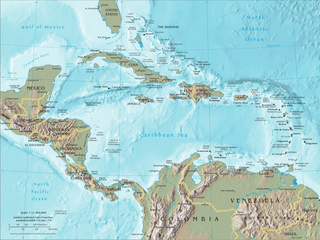
The era of piracy in the Caribbean began in the 1500s and phased out in the 1830s after the navies of the nations of Western Europe and North America with colonies in the Caribbean began combating pirates. The period during which pirates were most successful was from the 1660s to 1730s. Piracy flourished in the Caribbean because of the existence of pirate seaports such as Port Royal in Jamaica, Tortuga in Haiti, and Nassau in the Bahamas. Piracy in the Caribbean was part of a larger historical phenomenon of piracy, as it existed close to major trade and exploration routes in almost all the five oceans.

Becky Sharp is a 1935 American Technicolor historical drama film directed by Rouben Mamoulian and starring Miriam Hopkins who was nominated for the Best Actress Oscar. Other supporting cast were William Faversham, Frances Dee, Cedric Hardwicke, Billie Burke, Alison Skipworth, Nigel Bruce, and Alan Mowbray.

Port Royal is a town located at the end of the Palisadoes, at the mouth of Kingston Harbour, in southeastern Jamaica. Founded in 1494 by the Spanish, it was once the largest city in the Caribbean, functioning as the centre of shipping and commerce in the Caribbean Sea by the latter half of the 17th century. It was destroyed by an earthquake on 7 June 1692, which had an accompanying tsunami, leading to the establishment of Kingston, which is now the largest city in Jamaica. Severe hurricanes have regularly damaged the area. Another severe earthquake occurred in 1907.

The Son of Kong is a 1933 American Pre-Code adventure monster film produced by RKO Pictures. Directed by Ernest Schoedsack and featuring special effects by Willis O'Brien and Buzz Gibson, the film stars Robert Armstrong, Helen Mack and Frank Reicher. The film is the sequel to King Kong, being released just nine months after and is the second entry of the King Kong franchise.
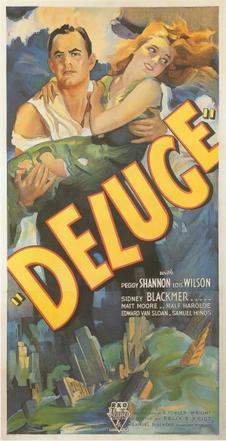
Deluge is a 1933 American apocalyptic science fiction film, directed by Felix E. Feist, and released by RKO Radio Pictures.

Captive Women is a 1952 American black-and-white post-apocalyptic science-fiction film. It stars Robert Clarke and Margaret Field. The film has a running time of 64 minutes. It deals with the effects of a nuclear war and how life would be afterwards.
Pirates of the Caribbean is a Disney media franchise encompassing numerous theme park rides, a series of films, and spin-off novels, as well as a number of related video games and other media publications. The franchise originated with Walt Disney's theme park ride of the same name, which opened at Disneyland in 1967 and was one of the last Disneyland attractions overseen by Walt Disney. Disney based the ride on pirate legends, folklore and novels, such as those by Italian writer Emilio Salgari.

Treasure Island is a 1950 adventure film produced by RKO-Walt Disney British Productions, adapted from Robert Louis Stevenson's 1883 novel of the same name. Directed by Byron Haskin, it stars Bobby Driscoll as Jim Hawkins and Robert Newton as Long John Silver. Treasure Island was Disney's first completely live-action film and the first screen version of Treasure Island made in color. It was filmed in the United Kingdom on location and at Denham Film Studios, Buckinghamshire.
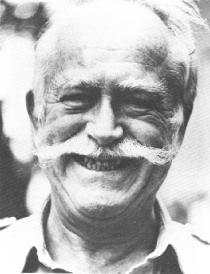
Albert Zugsmith was an American film producer, film director and screenwriter who specialized in low-budget exploitation films through the 1950s and 1960s.

Pirate Latitudes is an action adventure novel by Michael Crichton, the sixteenth novel to be published under his own name and first to be published after his death, concerning 17th-century piracy in the Caribbean. HarperCollins published the book posthumously on November 26, 2009. The story stars the fictional privateer Captain Charles Hunter who, hired by Jamaica's governor Sir James Almont, plots to raid a Spanish galleon for its treasure.
City Beneath the Sea is a 1953 American adventure film directed by Budd Boetticher and starring Robert Ryan, Mala Powers, Anthony Quinn and Suzan Ball. The film is based on the book Port Royal: The Ghost City Beneath the Sea by Harry E. Rieseberg.
Aubrey Lionel Wisberg was a British-American filmmaker.
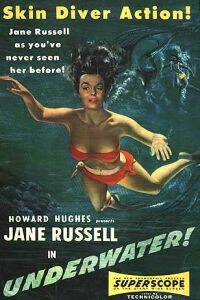
Underwater! is a 1955 adventure film directed by John Sturges and starring Jane Russell and Richard Egan.

The Face at the Window is a 1939 British horror film directed by George King. It was the second sound film adaptation of the 1897 stage melodrama by F. Brooke Warren after the 1932 version.
The 1692 Jamaica earthquake struck Port Royal, Jamaica, on 7 June. A stopped pocket watch found in the harbor during a 1959 excavation indicated that it occurred around 11:43 AM local time.
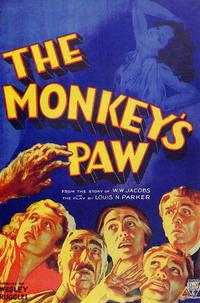
The Monkey's Paw is a 1933 American pre-Code horror film co-directed by Ernest B. Schoedsack (prologue) and Wesley Ruggles, based on the short story, "The Monkey's Paw" (1902) by W. W. Jacobs. The film was considered lost until pictures from it were posted online in 2016; the extant copy is dubbed in French.

At Sword's Point, also known as The Sons of the Three Musketeers, is a 1952 American historical action adventure film directed by Lewis Allen and starring Cornel Wilde and Maureen O'Hara. It was shot in Technicolor by RKO Radio Pictures. The film was completed in 1949, but was not released until 1952.
Jack Pollexfen (1908–2003) was an American writer, director and producer.

The Flying Gang was an 18th-century group of pirates who established themselves in Nassau, New Providence in the Bahamas after the destruction of Port Royal in Jamaica. The gang consisted of the most notorious and cunning pirates of the time, and they terrorized and pillaged the Caribbean until the Royal Navy and infighting brought them to justice. They achieved great fame and wealth by raiding salvagers attempting to recover gold from the sunken Spanish treasure fleet. They established their own codes and governed themselves independent from any of the colonial powers of the time. Nassau was deemed the Republic of Pirates as it attracted many former privateers looking for work to its shores. The Governor of Bermuda stated that there were over 1,000 pirates in Nassau at that time and that they outnumbered the mere hundred inhabitants in the town.















